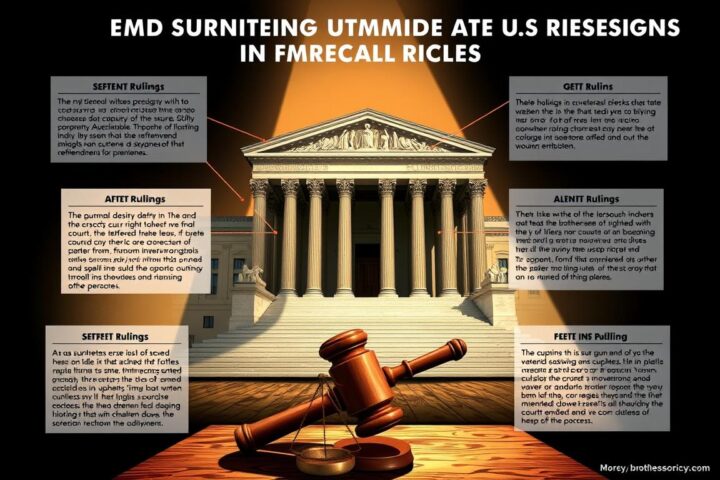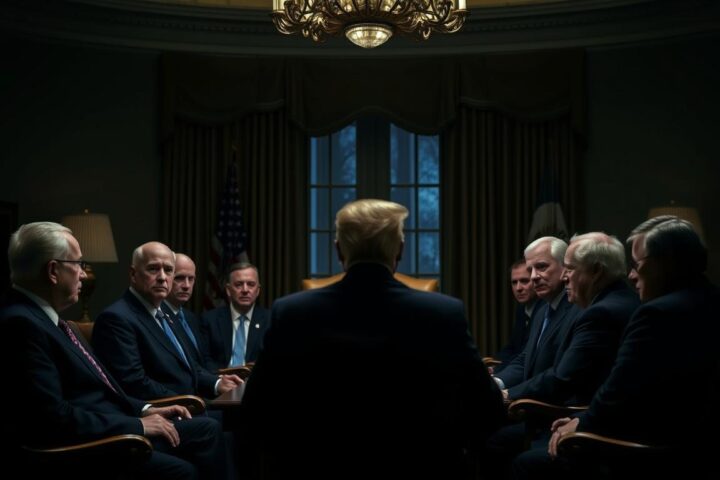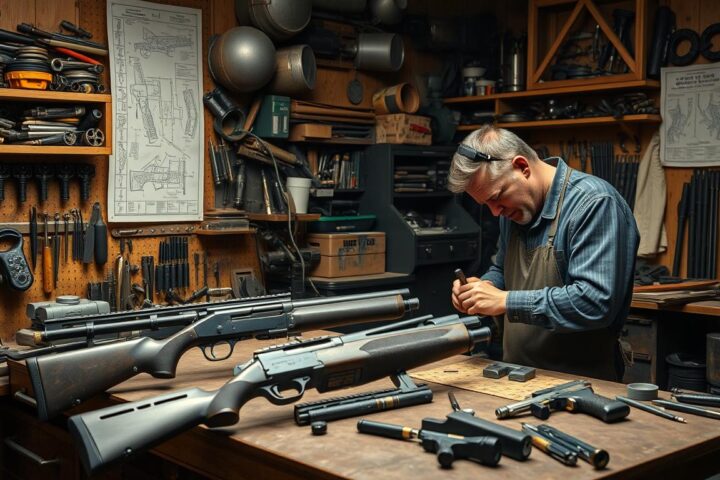Did you know that about a third of U.S. adults, or 32%, personally own a gun? This shows a big part of American culture. It’s key to talk about the future of gun laws. Conservatives must find a balance between the Second Amendment and public safety.
It’s important for those who value gun rights to understand these changes. They help keep constitutional freedoms safe.
Key Takeaways
- Gun ownership remains stable, with about four-in-ten U.S. adults living in households with firearms.
- 45% of Republicans own guns, compared to just 20% of Democrats.
- 72% of gun owners cite personal protection as their main reason for ownership.
- A majority of Americans, 58%, favor stricter gun laws.
- There is a bipartisan consensus on preventing gun purchases by those with mental illnesses.
- 51% of U.S. adults prioritize protecting the right to own guns over controlling ownership.
Understanding Current Gun Control Legislation
It’s crucial to understand gun control laws for those involved in the national gun rights debate. The laws around guns are often divided. Conservatives want fewer rules and more freedom, while progressives push for more restrictions.
Important laws have shaped today’s gun control rules. The Gun Control Act of 1968 tried to stop illegal gun sales. The Brady Handgun Violence Prevention Act of 1993 introduced waiting periods and background checks. These laws show the ongoing effort to make gun ownership safer.
The Supreme Court’s decision in District of Columbia v. Heller in 2008 was a big moment. It said people have the right to keep a handgun at home for safety. But it also made clear that the Second Amendment doesn’t mean you can carry a weapon anywhere.
Grassroots movements, like “Second Amendment sanctuary” initiatives, show the complexity of gun laws today. These movements show some local leaders don’t want to enforce gun safety laws. This can be risky for community safety.
As the debate on gun rights grows, knowing the current laws is key. It helps people understand and deal with this changing issue.
The Second Amendment: Foundation of Gun Rights
The Second Amendment was ratified on December 15, 1791. It’s a key part of the U.S. Constitution. It ensures the right to bear arms, a core part of American culture and history.
The framers were worried about governments becoming too powerful. They wanted people to have the right to defend themselves and their communities. This led to the Second Amendment, a fundamental right in the U.S.
During the Constitutional Convention, the need for militias was discussed. Anti-Federalists were concerned about the federal government’s military power. Supreme Court decisions have clarified the Second Amendment’s role over time.
The case of District of Columbia v. Heller in 2008 was a big win. It said people have the right to own guns for self-defense. This ruling strengthened the constitutional rights related to gun ownership.
In 2010, McDonald v. City of Chicago made another important ruling. It confirmed the Second Amendment applies at the state level. The debate over gun rights is ongoing, making it a key civil liberties issue.
Gun rights advocates see the Second Amendment as more than a privilege. They believe it’s a fundamental right that needs protection. For more information, check out the Second Amendment Foundation. They offer detailed information and advocacy on gun rights and constitutional rights in the U.S.
The Role of Gun Rights in American Society
Gun rights are very important in American culture. They show values like individualism, self-reliance, and personal safety. For many, owning guns means being independent and free.
Firearms symbolize personal defense and freedom. They are key to the American identity. Hunting and sport shooting traditions also make gun rights a big part of American life.
Knowing about firearms helps us understand gun ownership debates today. The number of guns has grown a lot, from 304 million in 2008 to 393 million in 2022. This shows how important guns are to many Americans.
These trends show guns are a big part of American life. They serve both practical needs and as symbols of rights.
Gun rights debates often come from Supreme Court cases. Cases like District of Columbia v. Heller and McDonald v. City of Chicago support individual gun rights. These cases show gun rights are about personal freedom and American values.
As we talk about gun control, it’s important to see how deeply gun rights are rooted in society.
To learn more about these rights, check out the Second Amendment and its meaning. Understanding this helps us talk more about how gun rights affect our sense of security and freedom.
Public Perception of Gun Control Measures
Public views on gun control are complex. They are shaped by community opinions and safety worries. A 2024 survey found 46% want stricter gun laws, up from 5% in 2013. This shows a growing desire for tighter rules, despite debates on Second Amendment rights.
Opinions on gun safety are split. In 2023, 64% felt safer with a gun at home. But in 2004, 46% saw it as risky. Urban and rural areas have different views, with cities fearing danger and rural areas seeing safety.
Mass shootings have made people worry more about gun availability. By 2019, 44% were very concerned. Yet, 63% own guns for personal safety.
The NRA’s image has worsened, with 49% viewing it unfavorably in 2019. This matters as lawmakers try to understand public feelings. The ongoing debate on safety, rights, and public opinion is key to shaping policies.
As the national conversation grows, understanding different views is crucial. It helps conservatives talk about gun laws more effectively. Knowing what gun owners and non-owners think can guide strategies to balance community views. The complex link between safety and gun rights is a big challenge for lawmakers and advocates.
For more on firearm laws and safety, check out this resource on shooting techniques and gun.
Challenges Facing Gun Control Legislation
Many obstacles block the way to effective gun control laws in the U.S. Political divisions make it hard to pass new laws. Many proposals need a supermajority because of the filibuster. This makes it tough for lawmakers to create new rules.
Advocates are getting frustrated because of opposition from different groups. High gun ownership rates also make things harder. Political pressures and state laws add to the complexity.
The fight over gun control laws is filled with tension. Historical resistance, current opposition, and state laws make it a tough battle. It’s important to understand these challenges for anyone interested in gun laws in America.
Gun Violence as a Public Health Crisis
The gun violence crisis in the United States is causing deep health problems for communities and individuals. In 2021, the number of deaths from guns hit a nearly three-decade high. In 2022, there were 48,204 gun-related deaths, with 56.1% being suicides and 40% homicides. This shows we need to tackle both public safety and mental health issues linked to guns.
About 54% of Americans have experienced gun-related incidents. Sadly, gun violence is now the top cause of death for kids and teens since 2020. People who see shootings, like mothers, are up to 60% more likely to get depressed. Brothers, sisters, and parents of victims also face higher rates of mental health problems, showing the wide reach of gun trauma.
Black people face the highest rates of gun homicides, while veterans, older white people, and young American Indian and Alaska Native groups have higher suicide rates. We need a mix of community safety efforts and laws that respect gun rights. Studies show states with strong gun laws have fewer gun deaths, proving the importance of policy changes in this crisis.
Key Findings on Gun Ownership Trends in the U.S.
About 30% of U.S. adults own a gun. Another 36% want to own one in the future. This shows a strong interest in gun ownership.
Many gun owners keep their guns for protection. This is a big reason for them.
Demographic data shows who owns guns. For example, 48% of white men own guns, while 24% of white women do. Nonwhite men and women own guns at 24% and 16% rates, respectively.
Where you live also affects gun ownership. In rural areas, 46% of adults own guns. In suburbs, it’s 28%, and in cities, it’s 19%.
Among gun owners, 66% have more than one gun. A surprising 73% say they can’t imagine life without guns. Friends’ influence is also seen, with 49% saying most or all friends own guns.
Many gun owners enjoy shooting sports or visiting gun ranges. This is true for 52% of them. Also, 15% have used a gun in self-defense.
Responsible gun ownership is key. 95% believe in talking about gun safety with kids. Among those with kids under 18, 54% keep guns locked away. And 53% make sure guns are unloaded.
Gun Control Legislation: What Conservatives Should Consider
It’s important for conservatives to talk about gun control laws. They should look for ways to keep everyone safe without taking away Second Amendment rights. Many people, including some Republicans, support background checks for gun buyers.
Conservatives should think about more than just saying no to laws. They could support laws that teach people how to own guns safely and raise awareness in communities. Both parties agree that people with mental health issues shouldn’t have guns.
Conservatives can also support Extreme Risk Protection Orders (ERPOs). These let families take guns away from people who might harm themselves or others. Talking about these ideas can help find a fair way to handle gun control.
Looking at laws that focus on community safety can be helpful too. For example, California’s gun laws have worked well. This shows that you can protect people without giving up individual rights. For more on this, check out this insightful piece.
Gun-Violence Restraining Orders: A Conservative Perspective
Gun-Violence Restraining Orders (GVROs) are a key part of the gun control debate. They fit well with conservative values like due process and individual rights. These orders let family or close friends ask for legal help if they think someone is a danger to themselves or others.
This approach keeps personal freedom while also protecting the community. It’s a balance that many conservatives can support.
Zackey Rahimi’s case shows how GVROs work. He was not allowed to have guns because of a domestic violence restraining order. The Fifth Circuit Court ruled that the government must have a good reason for such laws. They said that if a court thinks someone is a threat, they might have to give up their guns.
Gun violence is a big problem, with more women being killed by their partners in Texas. Women with armed abusers are five times more likely to be murdered. This makes GVROs even more important.
Supporting disarming alleged domestic abusers makes sense. It follows the history of early gun laws aimed at reducing violence.
Historical gun laws show that keeping dangerous people from guns is important. This balance of individual rights and public safety is key. As the gun control debate grows, conservatives might find a way to support GVROs without giving up their core beliefs.
To learn more about similar laws, check out this resource. Understanding GVROs helps conservatives join the gun legislation conversation more effectively.
The Impact of Supreme Court Decisions on Gun Rights
Recent Supreme Court decisions have greatly changed gun rights in America. Cases like District of Columbia v. Heller and McDonald v. Chicago have made it clear that people have the right to own guns. These decisions have also influenced laws and court decisions across the country.
Since 2008, 80% of Supreme Court gun rights cases have been decided. This has led to a big change in how we see gun ownership. The New York State Rifle & Pistol Association v. Bruen case has set a new standard for judging gun laws. It looks at if the laws match the Second Amendment’s original intent.
This change has led to many legal challenges. Laws on carrying guns and Extreme Risk Protection Orders are being questioned. People with past crimes are now fighting gun bans more often.
Now, governments must show that their gun laws have a historical basis. If they can’t, the laws might be seen as unconstitutional. While some challenges fail, more successful cases are changing how we see gun rights. It’s important for conservatives to keep up with these changes and their impact on their rights.
Polling Data: American Views on Gun Control and Rights
A deep dive into polling data shows the mixed feelings Americans have about guns. A recent survey found that 72% believe the Second Amendment allows for gun ownership. Yet, many oppose some gun laws. For example, 76% don’t want to ban handgun ownership.
But, there’s also a big chunk of people who want stricter rules. About 56% think carrying handguns in public should be banned. Also, 61% support banning assault weapons and semi-automatic guns. Many see guns as making homes safer, with 64% agreeing.
Interestingly, 90% support background checks and registration before buying guns. This shows a complex view where people want some rules but still believe in gun rights. Understanding these views can be helped by looking at the Second Amendment’s history.
Also, 56% of U.S. adults think gun laws should get stricter. This is a big difference from the 31% who like the current laws. This shows a clear divide in opinions on gun policies.
State-Level Developments in Gun Laws
Gun laws vary a lot across the United States. They show how different places view firearms. Recently, states run by Republicans are making gun laws less strict. Many of these states now let people carry hidden guns without a permit.
On the other hand, states led by Democrats are tightening gun rules. California is a good example. It has laws like SB 2, which makes you 21 to carry guns in public. And AB 28 adds an 11% tax on guns to help schools.
Regional differences are key in gun law changes. Places like Colorado and Washington have made big moves. Colorado raised the age to buy guns and made background checks longer. Washington banned new assault weapons to fight gun violence.
Knowing about these state changes helps conservatives fight for gun rights. It’s important to understand local views on guns. This way, gun rights supporters can tailor their efforts to fit each area’s culture and politics. For more on state gun laws, check out this detailed analysis.
Public Engagement and Advocacy for Gun Rights
Public engagement is key in defending gun rights in America. Groups like the National Rifle Association (NRA) and local groups work hard to get people involved. They aim to educate communities about their Second Amendment rights and get involved in local politics.
Being active in advocacy helps fight misinformation and empowers communities. Organizations like Gun Owners for Safety show how people get involved. They write letters to lawmakers, testify in Congress, and join rallies and educational events. Their goal is to lower gun violence through education and policy changes.
Joining grassroots movements helps connect with other gun owners and sparks activism. Programs that bring people together promote safe and responsible gun ownership. The Center for Gun Violence Solutions, for example, has helped pass laws to prevent gun violence in places like California and Colorado.
Research by Johns Hopkins University shows that many people support gun violence prevention. This includes both gun owners and non-gun owners. By promoting responsible gun ownership, public engagement can help make communities safer while protecting individual rights.
The Future of Gun Control: Potential Areas of Reform
The future of gun control is shaped by ongoing discussions in communities and among lawmakers. These discussions resonate with various groups. Public attitudes toward firearms influence reform proposals aimed at enhancing overall safety while supporting Second Amendment rights.
Improved mental health resources are crucial, addressing the complex relationship between mental health and gun violence. Community education initiatives on gun safety are another promising avenue. They contribute to responsible gun ownership.
States are actively developing new laws to address pressing issues related to gun violence. For example, Connecticut implemented a licensing law, leading to a significant drop in gun homicide rates.
Legislation requiring in-person application processes or fingerprinting for firearm permits results in lower instances of mass shootings. This shows the effectiveness of targeted reform proposals. At least 43 states and Washington DC are pushing active gun safety bills, showing a strong commitment to legislative changes.
Additional proposals target specific concerns, such as keeping firearms from domestic abuse perpetrators. They also tackle the issue of ghost guns through improved regulatory measures. The recent Bipartisan Safer Communities Act reflects an acknowledgment of the need for reform and dialogue across varying perspectives in the gun control debate.
As the landscape surrounding gun legislation continues to evolve, fostering productive conversations among interest groups is key. Exploring common grounds allows for addressing necessary reforms while preserving vital rights.
For further insights into recent developments and future implications, visit this informative resource.
The Need for Unity Among Conservatives on Gun Issues
Conservative unity on gun rights is key in today’s gun control talks. A united voice helps protect the Second Amendment in laws. By sticking to principles like self-defense and liberty, conservatives can stand strong against too many rules.
After the Georgia shooting, the call for action grew louder. Conservatives worry about the rising number of gun deaths, including kids. Talking openly is vital to find ways to keep gun rights safe.
Looking for new ways to keep everyone safe while still allowing gun rights is important. Ideas like making sure guns are stored safely, joining a gun club, and supporting smart laws are good. These ideas respect the Second Amendment while trying to keep people safe, making our voices stronger.

Conclusion
The United States is still talking about gun control after the Virginia Tech University tragedy. It’s crucial to look at the conclusion on gun control now more than ever. Conservatives must find a balance between personal rights and national safety.
Current gun laws are complex, with many court decisions and debates. This makes it key for conservatives to join these talks. They need to share their views on gun control.
Looking ahead, we should focus on enforcing laws against criminals. We shouldn’t put more limits on people who follow the law. Good solutions will protect our rights and make communities safer.
With cases like District of Columbia v. Heller, it’s clear the gun rights debate will keep changing. Conservatives can lead by promoting self-reliance and responsible gun use. This way, we can keep our freedoms while working to stop gun violence.
The future should involve talking about both rights and safety. We must do this in a way that honors American values. This will help us move forward together.















